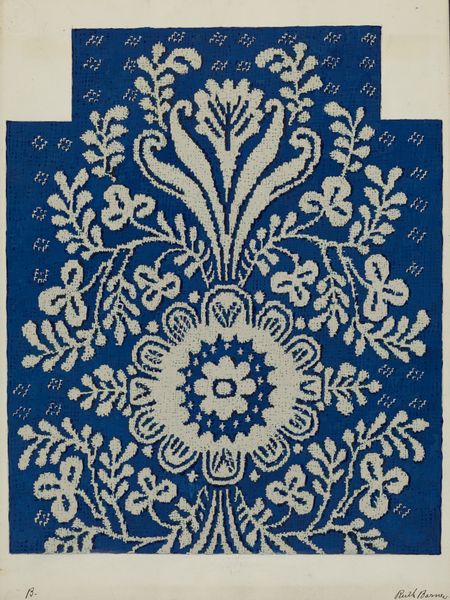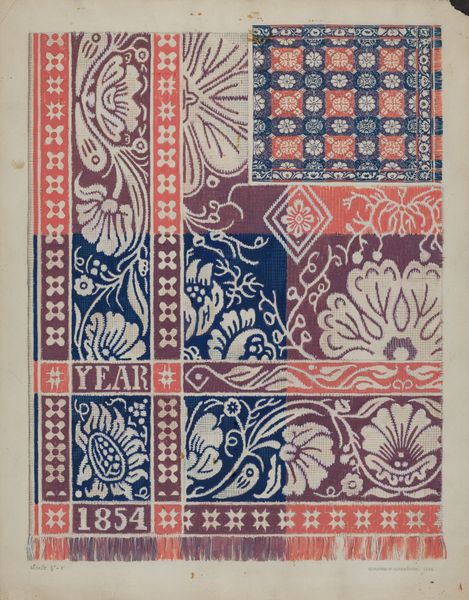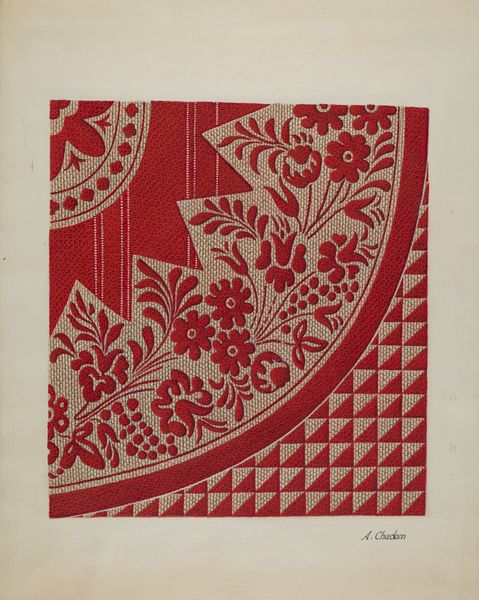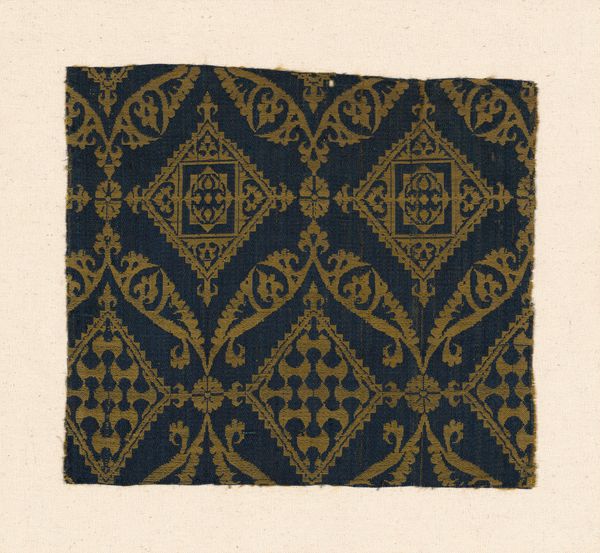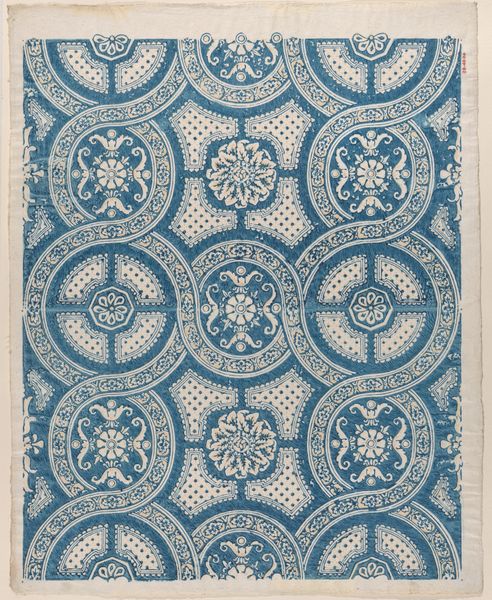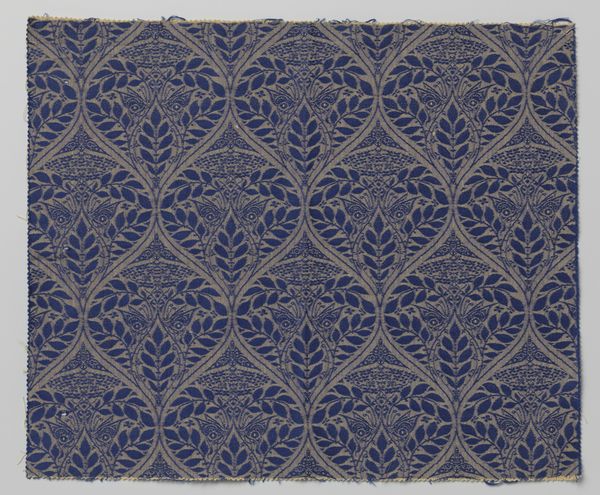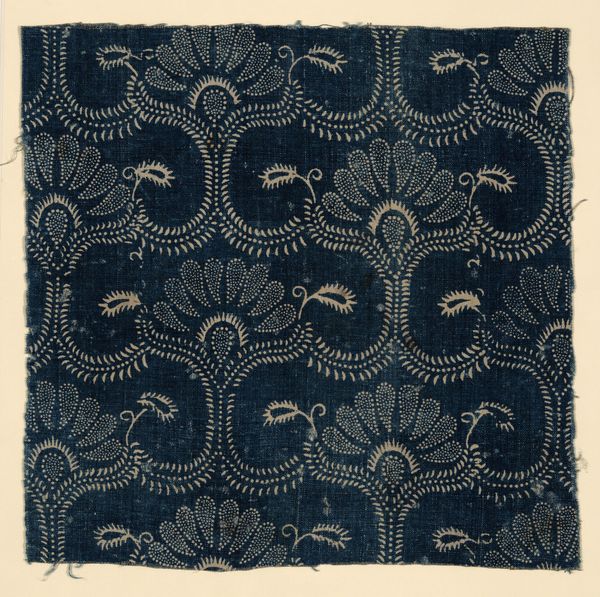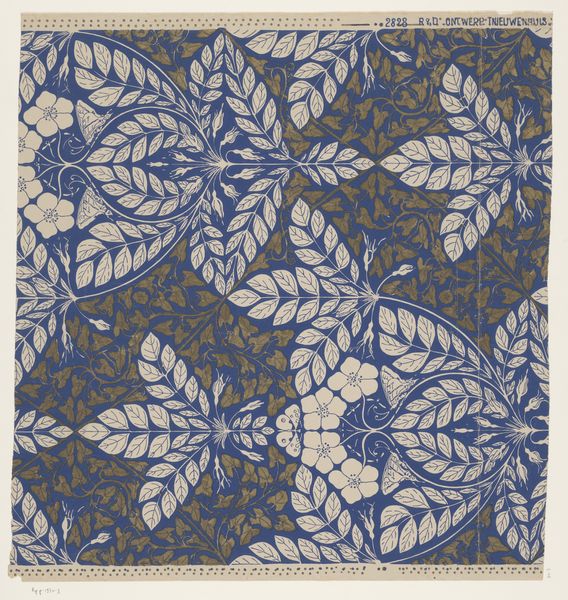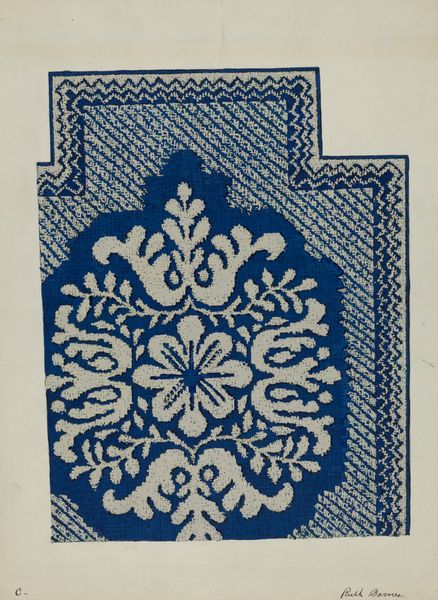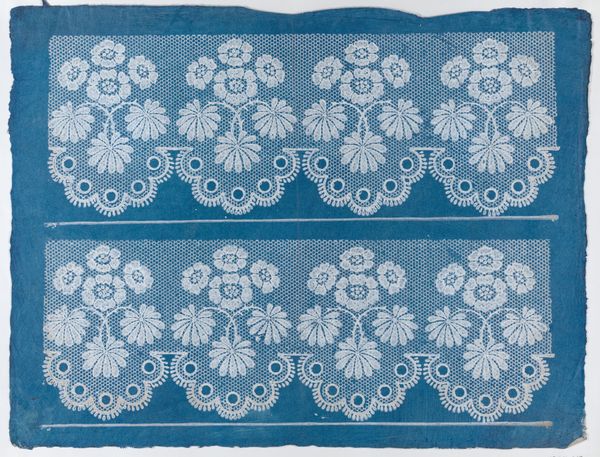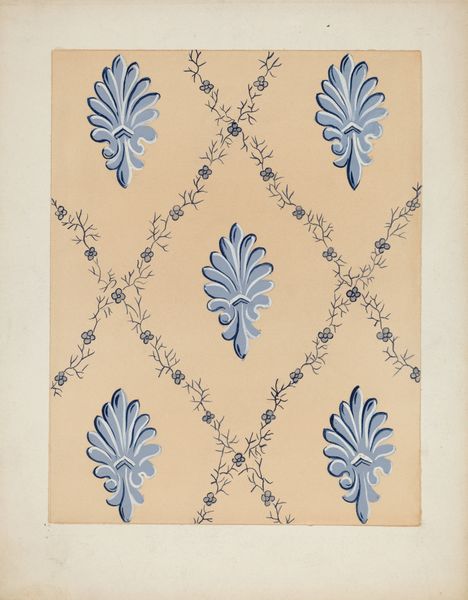
weaving, textile
#
decorative element
#
weaving
#
textile
#
geometric
#
decorative-art
#
imprinted textile
Dimensions: overall: 35.9 x 26.7 cm (14 1/8 x 10 1/2 in.)
Copyright: National Gallery of Art: CC0 1.0
Curator: Looking at this, I immediately think of woven structures. Editor: And I see coded messages woven into its warp and weft, connecting the domestic sphere with complex identities. Let me introduce the object: this is a "Coverlet", created around 1937. Its a textile, specifically weaving. Curator: I love how the woven textile emphasizes the manual labor and the intricate process required to bring these geometric and floral patterns into existence. There’s an entire network of production embedded in the fabric itself. Editor: Absolutely! The Coverlet embodies the folk-art tradition, yet it speaks volumes about women's roles, labor, and creative expression within marginalized communities, especially in the rural areas. It asks, who was the weaver and what social contexts framed her artistry? Curator: The blue and white colors are really eye-catching; what's more interesting is the tension between decorative design and utilitarian object, the idea of taking mundane materials to construct meaning. The visual experience speaks of everyday lives turned extraordinary, you know? Editor: Definitely. Beyond its function, this coverlet presents a platform to decode the experiences of female artisans who had their narratives woven—literally and figuratively—into a piece that reflects the historical, economic, and cultural circumstances. What statement, for example, is being made in its departure from usual quilting or sewing designs? Curator: Indeed! Thinking about all those interconnections reminds me that even objects rooted in the past like this, still provide rich reflections of society, production, labor, value. It all makes this coverlet a deep object worthy of further exploration. Editor: Agreed, exploring this coverlet's texture through social, gendered, and political dimensions offers us new means to comprehend histories that frequently went unacknowledged. It allows us to touch histories of agency and skill.
Comments
No comments
Be the first to comment and join the conversation on the ultimate creative platform.
